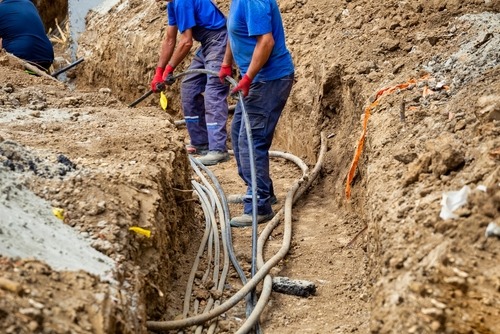DOE awards $34M for technologies to underground power lines

The U.S. Department of Energy (DOE) awarded $34 million for 12 projects across 11 states to develop cost-effective, high-speed, and safe undergrounding technologies.
The selected projects, which are part of the Grid Overhaul with Proactive, High-speed Undergrounding for Reliability, Resilience, and Security (GOPHURRS) program, are designed to advance solutions to help upgrade and expand the nation’s grid infrastructure.
“Modernizing our nation’s power grid is essential to building a clean energy future that lowers energy costs for working Americans and strengthens our national security,” U.S. Secretary of Energy Jennifer Granholm said. “With today’s announcement, DOE is supporting teams across the country as they develop innovative approaches to burying power infrastructure underground — increasing our resilience and bringing our aging grid into the 21st Century.”
The electric power distribution system in the U.S. has over 5.5 million miles of lines with over 180 million power poles. All of these lines and poles are susceptible to damage by weather and account for a majority of power outages in the country each year. Undergrounding power lines is a proven way to enhance system reliability for both transmission and distribution grids as weather events are less likely to interfere with systems that are protected below ground.
Some of the award winners include:
• Arizona State University ($4,263,082), to develop a water-jet underground construction tool that would deploy medium-voltage electrical cables and conduits simultaneously underground with a lower risk to existing utilities by eliminating the need for a hard drill bit.
• GE Vernova Advanced Research in Niskayuna, NY ($3,674,998), to develop a robotic worm tunneling construction tool that would dig and install conduit and cables for underground distribution powerlines in a single step. GE’s system would mimic the natural movement of earthworms and tree roots to install 1,000 feet of cable and conduit in two hours with unmatched flexibility. The tool could deploy from a standard pickup truck.
• Melni Technologies in Twin Falls, ID ($2,000,000), to redesign and develop medium-voltage power cable splice kits that require fewer steps and streamline connections to greatly reduce human errors and boost the reliability of underground electrical power distribution systems. Melni’s proposed kits could be installed in 10-15 minutes.
• Oceanit in Honolulu, HI ($3,276,836), to develop a look-ahead subsurface sensor system—capable of sensing what lies beyond a drill bit–that would take advantage of unmanned aerial vehicles and electromagnetic resistivity techniques to avoid damaging existing utilities when undergrounding powerlines.
• Pacific Northwest National Laboratory in Richland, WA ($3,750,000), to develop an artificial intelligence system for processing geophysical survey data into digital twin—a model of a real-world physical product—and augmented reality in order to identify existing utilities and other subsurface obstacles before installing underground power distribution lines.
• Prysmian Cables and Systems USA in Highland Heights, KY ($4,500,000), to develop a hands-free power cable splicing machine operating in underground vaults to reduce the share of splicing-caused medium-voltage network failures from 60-80 percent to less than 5 percent and dramatically improve workforce safety.
The projects will be managed by DOE’s Advanced Research Projects Agency-Energy.
